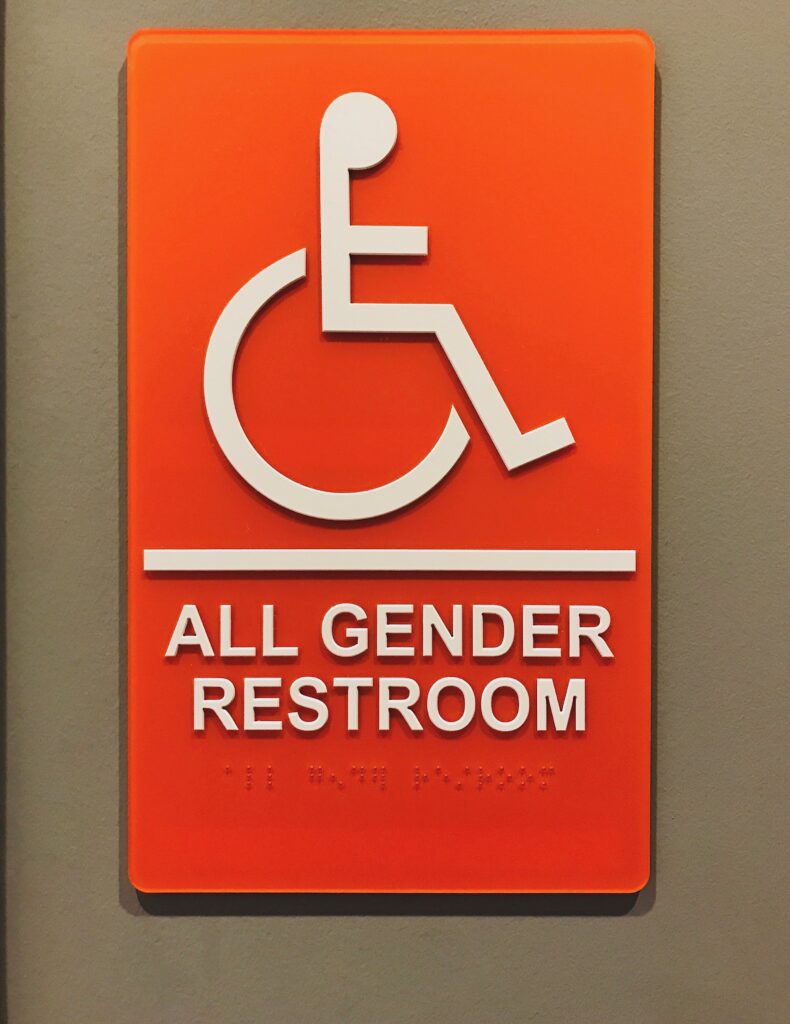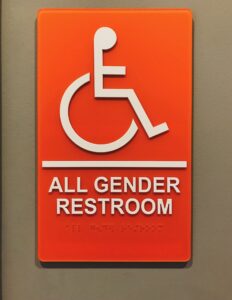While ADA braille signs must meet specific tactile and braille requirements, the design of tactile signs can go beyond basic functionality. Photopolymer technology allows for the creation of raised decorative elements on ADA braille signs, offering designers a unique opportunity to enhance both the appearance and texture of signage. With photopolymer, tactile signs can incorporate custom borders, intricate designs, and even QR codes, transforming signs into both accessible and visually appealing elements.
How Photopolymer Creates Decorative Tactile Signs
The process of creating tactile signs with photopolymer is straightforward yet incredibly versatile. Using a film negative, the raised elements of a sign are exposed to UV light, creating tactile surfaces directly from almost any 2D image. This means that braille dots, text, room numbers, borders, logos, and even complex decorative elements can be raised and integrated seamlessly.
Photopolymer is an ideal choice for producing tactile signs because it allows for detailed designs without adding complexity to the production process. Once the image is exposed and processed, the entire tactile design is ready without the need for extra steps, making it both efficient and effective for creating high-quality ADA braille signage.
Examples of Decorative ADA Compliant Tactile Signs
1. Dual-Color Tactile Face: One sign design example features a full photopolymer face, with the bottom half painted and tipped in a different color. This technique not only adds visual contrast but also enhances the sign’s texture, creating a distinct look and feel.
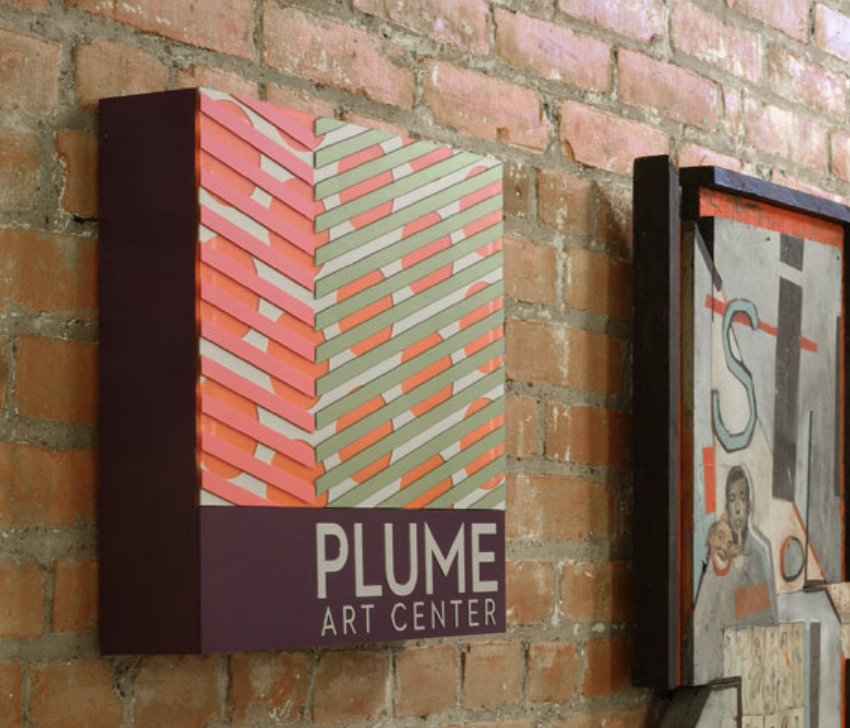
2. Raised Decorative Elements: Using a positive image in the film during fabrication, designers can create intricate, raised decorative elements. This approach brings an additional dimension to tactile signs, allowing decorative patterns to be featured alongside functional text and braille.

3. QR Code Integration: Another creative application of photopolymer in tactile signs involves raised QR codes. Each element of the QR code is rendered in raised photopolymer, allowing users to scan the code with ease while adding a unique tactile feature to the sign.
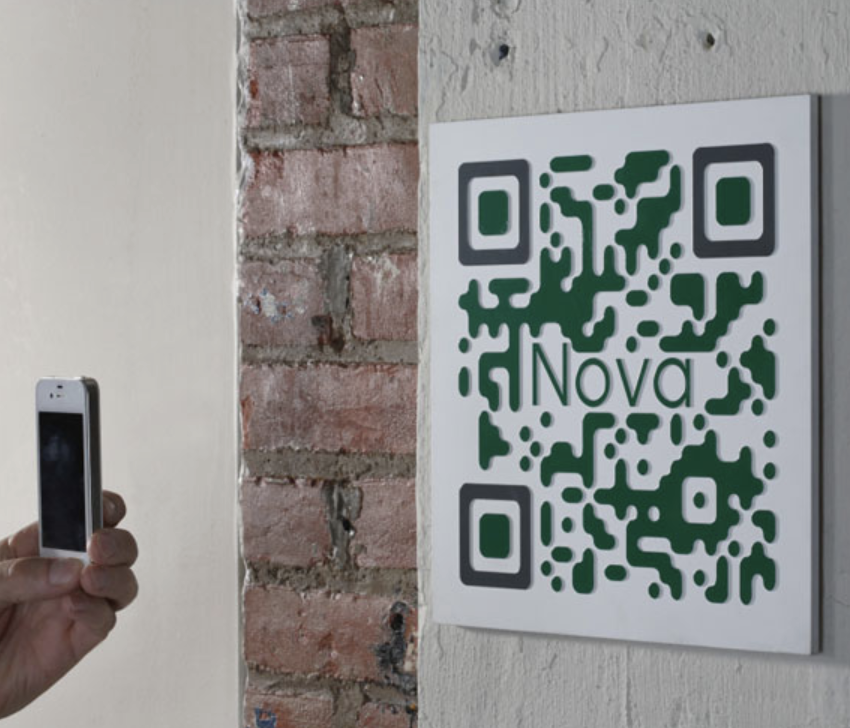
4. Custom Borders and Shapes: A custom border that matches the shape of the sign can also be achieved with photopolymer. With this method, the border, decorative elements, braille, and tactile text are all exposed and processed together, creating a seamless and cohesive design.
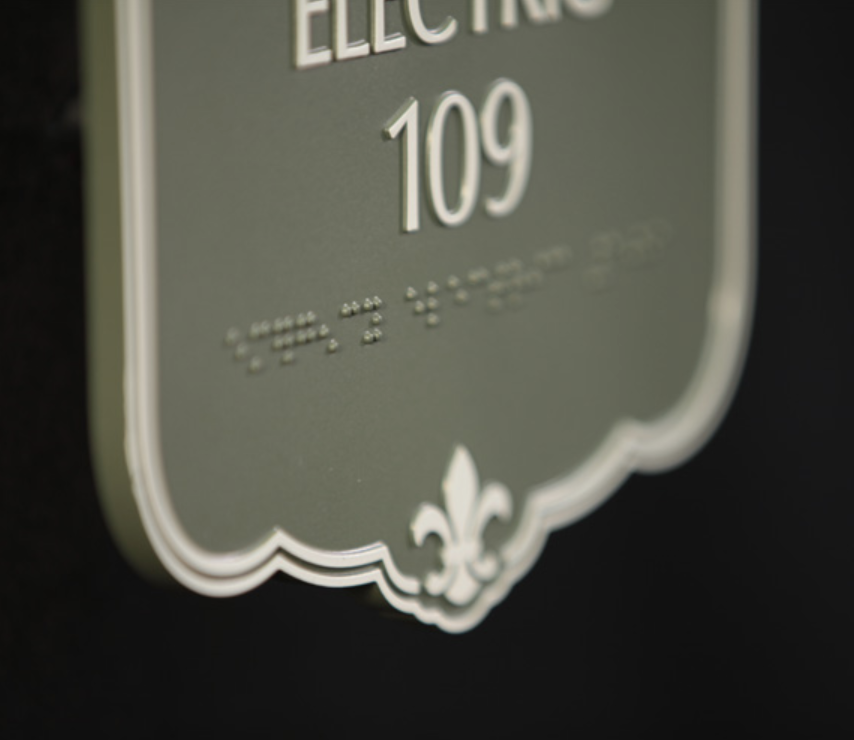
5. Changeable Insert Windows: In another example, the entire sign face is made from the NovAcryl PT Series photopolymer and surface painted. Tactile room numbers, braille, and decorative elements are integrated into the design, and a window is routed from the face to accommodate a changeable insert. This feature is ideal for facilities where information may need to be updated frequently.

Photopolymer as a Key Material for Innovative Tactile Signs
Photopolymer technology continues to expand the creative possibilities for tactile signs, allowing designers to incorporate complex and artistic elements into ADA braille signage. With its simplicity and versatility, photopolymer enables sign makers to create tactile signs that are both functional and visually striking, supporting accessible design that aligns with the aesthetic goals of any space.
For more information on creating decorative tactile signs with photopolymer, or to see how these signs are fabricated, contact us to explore the possibilities.
